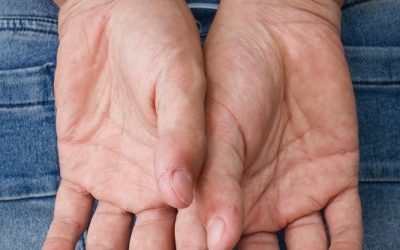Do Men and Women View Addiction and Mental Illness Differently?
Content
The number of males who enter substance use disorder treatment overall is far greater than the number of females. The prevalence of stimulant use disorder as a result of cocaine use is estimated to be 0.4 percent among males and 0.1 percent among females. The highest prevalence of this diagnosis in men occurs among those 18 to 29 years old. Part of the reason for this is that women metabolize alcohol differently than men. After drinking the same amount of alcohol, women tend to have higher blood alcohol concentrations than men, making them more susceptible to the effects of alcohol abuse. Individuals from lower-income levels may find drugs more easily accessible, and youth may run to drug dealers on the way to school, at bus stops, and near playgrounds.
But a significant number of people die every year from directly from drug overdoses. ‘Substance use disorders’ are classified on the basis of drug dependency, as defined by the criteria in the WHO’s International Classification of Disease (ICD-10). We see that premature deaths from smoking is the large contributor to this. Overall, premature deaths from substance use greatly outnumber direct deaths from overdoses. Women who struggle with substance abuse or addiction are more likely than men to have experienced some form of childhood trauma.
Common Causes of Addiction in Men
To provide individuals with the best, most effective treatment, it is important to take into consideration the role that gender differences play in addiction. The FDA approved Buprenorphine, medication-assisted treatment for opioid addiction in 2002. The Mental Health Parity and Addiction Equity Act of 2008 require insurance companies to provide similar benefits for mental health and substance abuse as they do for medical care. The Affordable Care Act of 2010 expanded coverage for addiction treatment. These differences can be attributed to numerous factors, with one of the main factors being how early men and women experiment with drug misuse. Research from theNational Institute on Drug Abuseexplains that males misuse drugs at an earlier age than females in large part due to having more opportunities during adolescence.

Overdose death from prescription use of opioids occurs in men at higher rates. One factor for a woman developing women and alcoholism an opioid use disorder may come from being prescribed a higher amount to be used over a longer period.
Gender Helps Tailor an Effective Drug Abuse Treatment Program
Our highly trained professionals and licensed therapists use various methods, from our Heartland detox programs to our unique therapeutic methods, to help you safely get through withdrawals. After realizing addiction or battling mental illness, it is vital https://ecosoberhouse.com/ to get help from professionals, so you are ensured to not relapse. We acknowledge and thank the staff and research members from the Rakai Health Sciences Program and the data collectors who work tirelessly to conduct the Rakai Community Cohort Study.
- This bias has hindered the field of addiction treatment in examining and accommodating the specific issues women face when it comes to treatment and recovery.
- As such, no explicit study shows that one gender is more dependent on alcohol or other substances than the other.
- Body water diffuses alcohol content as it’s digested, which means women have a higher concentration of alcohol in their blood stream when they drink.
- There is a greater genetic disposition to using and abusing substances than many people realize.
This pressure often results in severe impairment in the ability to identify and process emotions, which leads men to address their emotions with substance abuse. Family therapyis also an effective way to improve treatment for women who have families. It can help the family understand how to support the person in recovery. When families can better support the person in recovery, there is less chance of relapse, and the whole family unit will learn healthy habits that make it possible to sustain recovery.
Art Therapy
In the US, many women now appear at least as likely as men to engage in and complete treatment. Nevertheless, African American women as well as women with lower incomes or who have psychological problems or greater severity of addictive disorders are less likely to continue with treatment. Getting access to effective care is the first step toward recovery, and medication-assisted treatment has proven to be the gold standard for helping people with an SUD achieve successful outcomes. Approximately 20% of men have an alcohol use disorder compared to between 7% and 12% of women. Yet recent studies show women’s drinking habits are falling more in line with their male counterparts.
- 8 out of 10 women who are in treatment for substance abuse or addiction have a history of trauma or abuse.
- Opioid abuse and addiction have become an epidemic in the past couple of decades, but some studies show the growth of the problem has disproportionately affected women.
- Research has shown that confrontational styles are less effective with women.
- When it comes to addiction, are women judged more harshly for using certain substances?
- Rehab and addiction treatment programs for men and women have also proven to lead to better overall outcomes.
Women in the late stages of develop hypertension, anemia and malnutrition much quicker than alcoholic men. They are also at risk for developing depression, sleeping problems and are more at risk for personal injury. “Tough love” approaches that seek to dismantle a person’s denial about drug use can work well for men but may only serve to traumatize women further.
Total deaths
Men are more likely to use marijuana and heroin and in larger quantities. This chart is shown for the global total, but can be explored for any country or region using the “change country” toggle. Discussing gender and addiction is important, but recovery is even more important. Ultimately, we are here to help individuals understand the connection between drug abuse and women’s health. Addiction treatment centers can help addicts of both genders recover from addiction and regain control of their lives. Drug abuse-related gender differences stem from different histories, body composition, and physiologies. Having gender-specific programs can benefit both men and women in many ways.

This list of similarities and differences in addiction risk, development and progression among males and females may not be exhaustive. We have this handy list to give a clear picture of the similarities and differences in addiction risk, development and progression among males and females. The significant disparity in SUD rates between men and women is wanting. These differences range from increased social pressure to greater access and opportunities. There is a greater genetic disposition to using and abusing substances than many people realize. Chronic pain conditions can also result in prescription drug addiction. Patients who use prescription drugs to manage their pain and recovery processes sometimes become addicted to those medications.
Reducing the burden from harmful use of alcohol
More specifically, the National Institute on Drug Abuse states that around 4 million women reported past-year misuses of prescription pain medicines – compared with 5 million men. Their abuse rate of cocaine, methamphetamine, and other stimulants are almost similar. Young women are more likely to become addicted to stimulant abuse and suffer more damage to their health than men . Women are more likely to receive emergency opioid use and abuse treatment than men. This is mainly because women are more likely to experience chronic pain and other physical conditions than men.

These findings were confirmed by Pirie and colleagues14 in a cohort of 1.2 million women followed for 12 years in the United Kingdom with an RR of 21 for lung cancer in women who smoked. Dependence on alcohol and tobacco or illicit drugs is generally higher in men, but the gender gap is narrowing at an alarming rate, especially in adolescents. The rate is disproportionate to the prevalence rates for men and women with different types of substance use disorders. In general, men are more likely to develop or be diagnosed with a substance use disorder than women. Men are likely to begin to abuse drugs or alcohol due to peer pressure.
Gender differences appear in the use of the illegal opioid heroin, too. Men’s first-time with it tends to be with a friend while the first time for one in every two women happens with a sexual partner. Alcoholism has devastating effects on a person’s health and personal life, no matter what sex they are. Studies show, however, that the risk factors that lead to alcoholism and the consequences of alcohol abuse differ among men and women. If you’re looking for treatment for your daughter, niece, granddaughter or another woman in your life, consider services that are tailored to women’s needs and obstacles they experience.
